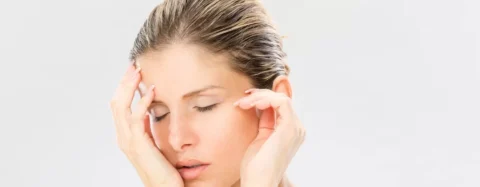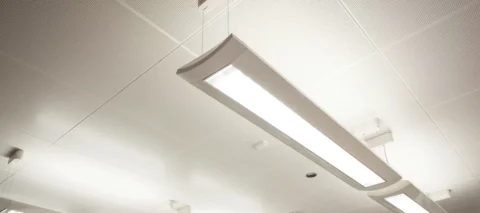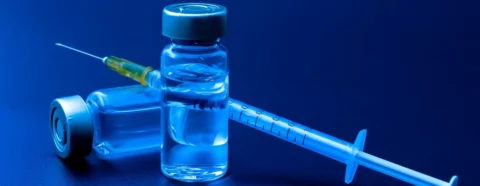Sweating is a completely normal body reaction that helps control our temperature and cools us down whenever we are moving our body too much. But some people may have overactive sweat glands that cause them to release more than necessary sweat. Amazingly, Botox, a popular treatment for facial wrinkles, can also be used to treat excessive sweating in common areas like the face and forehead.
So how exactly does Botox for sweating forehead work? Botox for excessive forehead sweat works in the same way that it reduces wrinkles and frown lines. As a neurotoxin injection, it stops the release of chemical signals that are responsible for activating your sweat glands. The treatment can provide relief from forehead sweating symptoms from six months up to a year.
Botox Treatment For Excessive Forehead Sweating
By now, everyone is probably familiar with Botox cosmetic. Over the years, this injectable has established a massive following because it is a great cosmetic treatment option for eliminating forehead wrinkles, frown lines, and Crow’s feet.
What makes Botox cosmetic injections work as an anti-wrinkle solution is because of its muscle relaxing effects on the face. Botox, or botulinum toxin, is derived from the Clostridium botulinum bacteria and it is a potent substance known for weakening or relaxing the facial muscles to limit muscle contraction and smoothen the appearance of facial creases and folds.
The same principle of action applies when Botox is used for excessive sweating or hyperhidrosis. Botox was initially approved for the treatment of axillary hyperhidrosis, or excessive underarm sweating, in 2004. It is an effective alternative treatment for when topical antiperspirants are not enough, reducing excessive armpit sweating by at least 82 to 87 percent as shown by studies.
The use of Botox for craniofacial hyperhidrosis, or excessive sweat on the face and forehead, is still considered off-label but it is safe and effective as long as performed by an experienced Botox provider.
When treating forehead sweating with Botox, the injection works by interrupting the activity of the nerve endings to stop eccrine glands from producing sweat fluids. Botox essentially shuts down the normal function of the sweat gland so that you won’t heavily perspire on the forehead area.
What The Botox Procedure For Forehead Sweating Looks Like

Botox injections for treating excess sweat on the forehead should only be done by a licensed dermatologist or board certified doctor. Placing botulinum toxin injection on the forehead area requires a high level of skill and precision because it can affect its efficacy if it is injected too superficial or too deep in the muscles.
A standard Botox treatment for forehead sweat typically requires an average total dose of 100 Botox units. Using very small needles, at least 2 to 3 units of Botox injection will be placed per injection site while carefully avoiding the eyebrow area to minimize the risk of eyebrow drooping.
The procedure is usually an outpatient treatment and it can be done in a matter of minutes. It does not require downtime and patients can resume their normal activities as soon as they are done getting the injections.
After the treatment, you may experience common temporary side effects like post-injection site pain, bruising, swelling, and headache. Post-treatment complications are very rare especially when the injections are given with good technique and administered in small doses.
For results, you may need to wait at least seven to fourteen days before Botox fully takes effect. You can see initial improvements in reduced sweating within two to five days after your treatment session while complete dryness in the forehead and facial skin can be achieved in two weeks.
Botox greatly helps improve the quality of life for craniofacial hyperhidrosis sufferers. It reduces forehead sweating by at least 75 percent for an average of five months. It is recommended that you do routine follow-ups with your Botox provider to see if you need new injections to maintain dryness.
What Causes Forehead Sweating?
Forehead sweating is one type of craniofacial hyperhidrosis or the condition of excess sweating on the face and head. To better understand what can cause this condition, it’s important to know the two main kinds of hyperhidrosis:
1. Primary Hyperhidrosis
Primary hyperhidrosis is excessive sweating that often starts from childhood or adolescence. There is no known cause for what triggers this type of hyperhidrosis but there are studies that show that it may have a genetic component. Others say that the symptoms of primary hyperhidrosis may develop due to the overactivity of the body’s sweat glands as a result of environmental or physical stress.
This is also known as primary focal hyperhidrosis because it is a type of excessive sweating condition that is often localized in a specific body or facial part. The common areas of primary hyperhidrosis are the hands, soles of the feet, head, and underarm sweat. Excessive facial sweating is usually a type of primary hyperhidrosis.
2. Secondary Hyperhidrosis
Unlike primary hyperhidrosis, secondary hyperhidrosis is caused by an existing medical illness or as a reaction to prescription medication. It’s also called secondary generalized hyperhidrosis because the excess sweat occurs on larger or more generalized areas of the entire body.
Some of the conditions that can cause secondary hyperhidrosis are obesity, diabetes, hyperthyroidism, hot flashes or menopause, heart attack, nervous system disorders, chronic infections, and low blood sugar.
What Are The Other Hyperhidrosis Treatment Options
If you notice that you have heavy or abnormal sweating episodes, you should get checked by your primary physician to determine the cause and the possible treatments. Aside from Botox injections, here are the alternative treatments for forehead and facial hyperhidrosis:
1. Antiperspirants
Antiperspirants are not just used for excessive armpit sweat. There are available topical antiperspirants, usually in gel or wipes form, which can be applied on the facial skin and forehead to control sweating. Most antiperspirant products today often contain aluminum-based active ingredients which help block your sweat glands to control your perspiration.
2. Iontophoresis
Iontophoresis is commonly used for palmar hyperhidrosis (hands) and plantar hyperhidrosis (feet). It can be considered as an alternative treatment when prescription antiperspirants are not enough for your excess sweating condition.
This treatment is usually done in a series of sessions in a medical clinic or at home (if you have the machine). During iontophoresis, you will submerge both hands or feet in water and a medical device will send electric shockwaves that will prevent sweat from temporarily exiting your glands.
For facial sweating, there are available face mask applicators that can be placed over your skin. Make sure to consult first with your doctor before using the iontophoresis devices on your own.
3. Laser treatments
Laser therapy can also be used for the treatment of excessive sweating. Like Botox, it’s a minimally invasive procedure that only requires directing a beam of light to heat up and destroy the sweat glands in the underarm area. The procedure is usually performed under local anesthetic or with the application of numbing cream over the treatment area. A laser treatment session can be done in less than an hour.
4. Prescription medicine or anticholinergic drugs
Your doctor may also prescribe you oral medications for forehead sweating. These prescription drugs or anticholinergic medications act as nerve blockers that stop the release of chemicals that will activate the sweat glands. While they are effective for controlling excessive sweating, these drugs may not be recommended for long-term use since they can cause side effects like dry mouth or blurred vision.
5. Surgery
Surgical intervention for excessive sweating should only be pursued in cases when your condition does not improve with other hyperhidrosis treatments. The surgery is called endoscopic thoracic sympathectomy and in the procedure, the surgeon will cut the nerves that are connected to the sweat glands. It’s usually performed on patients with excessive underarm or facial sweating.
Here’s a table that provides a better picture of the best treatment areas and the results of each hyperhidrosis treatment, including Botox:
| Treatment areas | Results | |
| Botox | Underarm, face, hands, feet, forehead | Results can last anywhere from six to twelve months |
| Antiperspirants | Underarm, face, hands, feet, forehead | Can maintain dryness for up to 24 hours |
| Iontophoresis | Best for hands and feet | Results need to be maintained with follow-up sessions to keep sweating under control |
| Lasers | Best for underarm sweating | Results can last for up to six months |
| Anticholinergic medications | Underarm, face, hands, feet, forehead | Can help manage sweating in the body for as long as you are prescribed to take them |
| Surgery | Best for underarm and craniofacial sweating | Results are often permanent after hyperhidrosis surgery |
Other Areas of Excess Sweat That Can Be Treated By Botox

As long as they are given by an experienced injector or cosmetic practitioner, Botox can successfully treat multiple areas of the face and body affected by excessive sweating. Aside from the underarm and the forehead, you may also receive the injections if you are suffering hyperhidrosis in the following areas:
- Upper lip sweating
- Sweaty scalp, also known as scalp Botox
- Hands sweating
- Sweating in the soles of the feet
- Groin area
- Chest and back area
See Our Expert Doctors at Ethos Spa For Your Botox Treatment
Treat forehead sweating with Botox before it gets worse and affects your quality of life and self-confidence. Here at Ethos Aesthetics + Wellness, our expert doctors and Botox practitioners will assure that you get the best injection treatments so you don’t have to sweat about your day.
Ethos Spa provides quality aesthetic treatments and Botox injections for clients in New Jersey and nearby areas. Our clinic is home to some of the best injectors in the state and we guarantee the highest level of success for your Botox procedures. Schedule a consultation with one of our doctors today.







